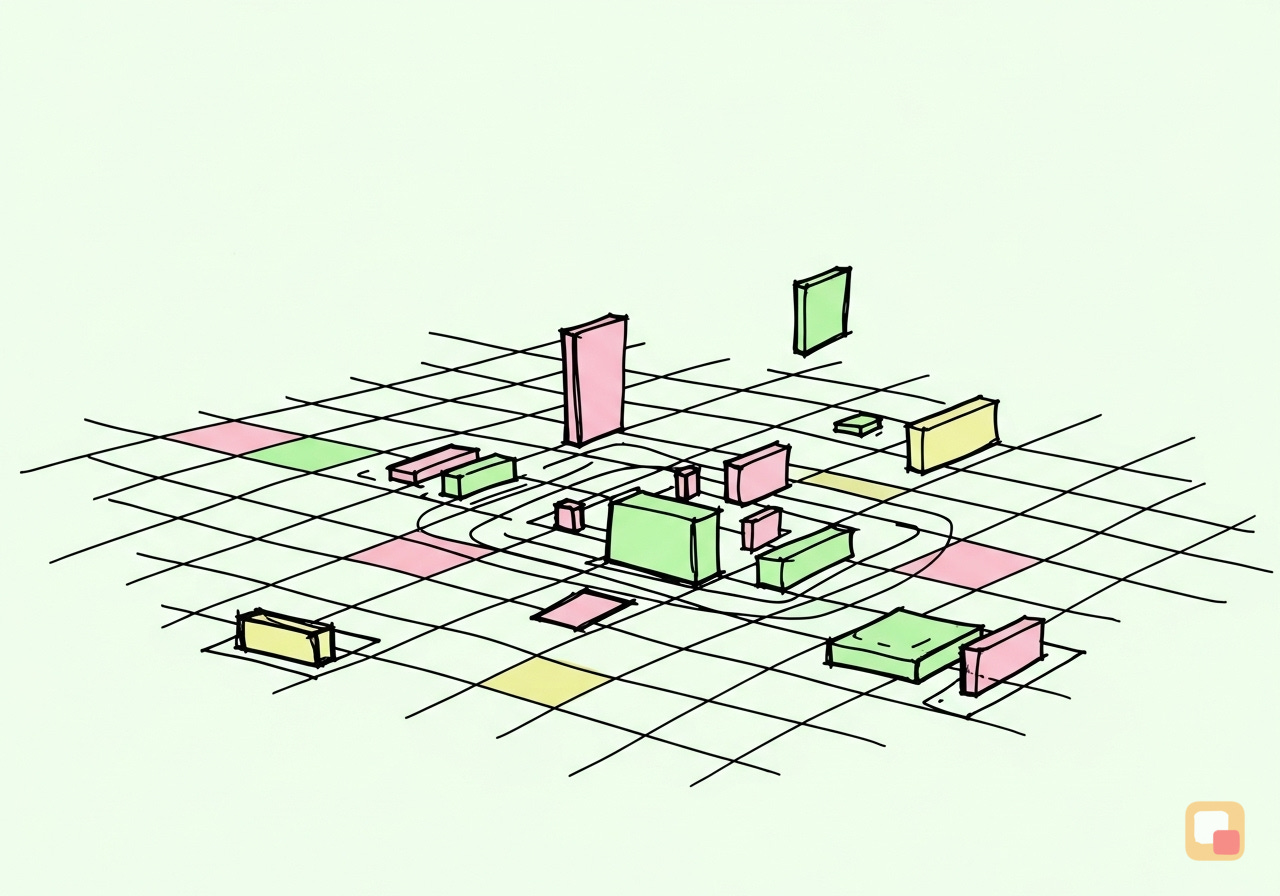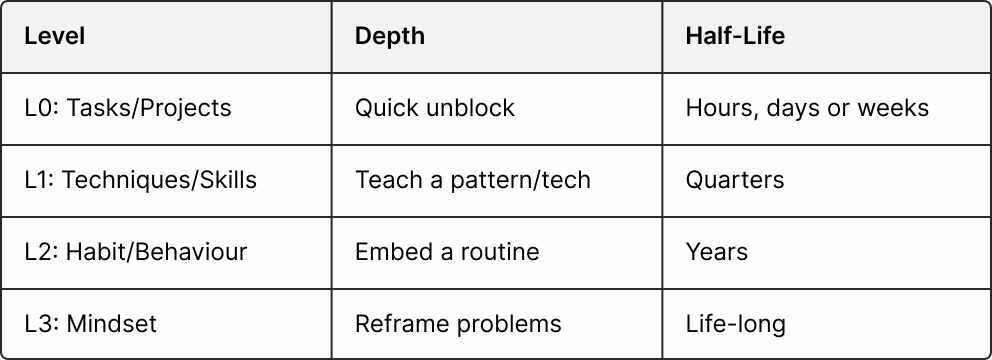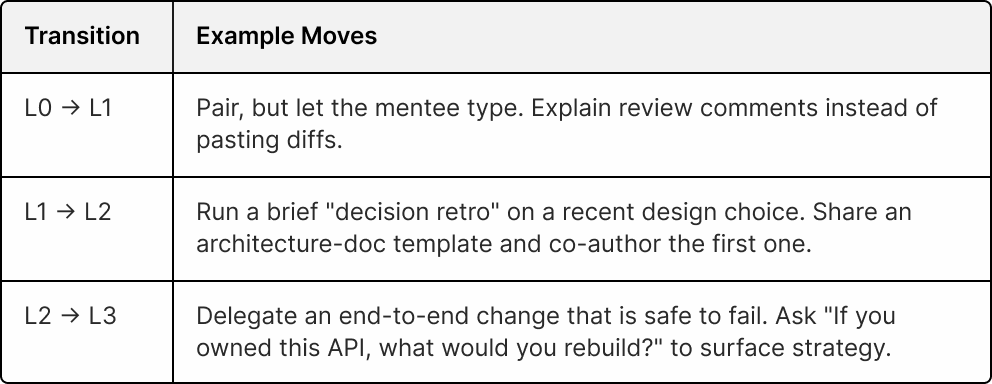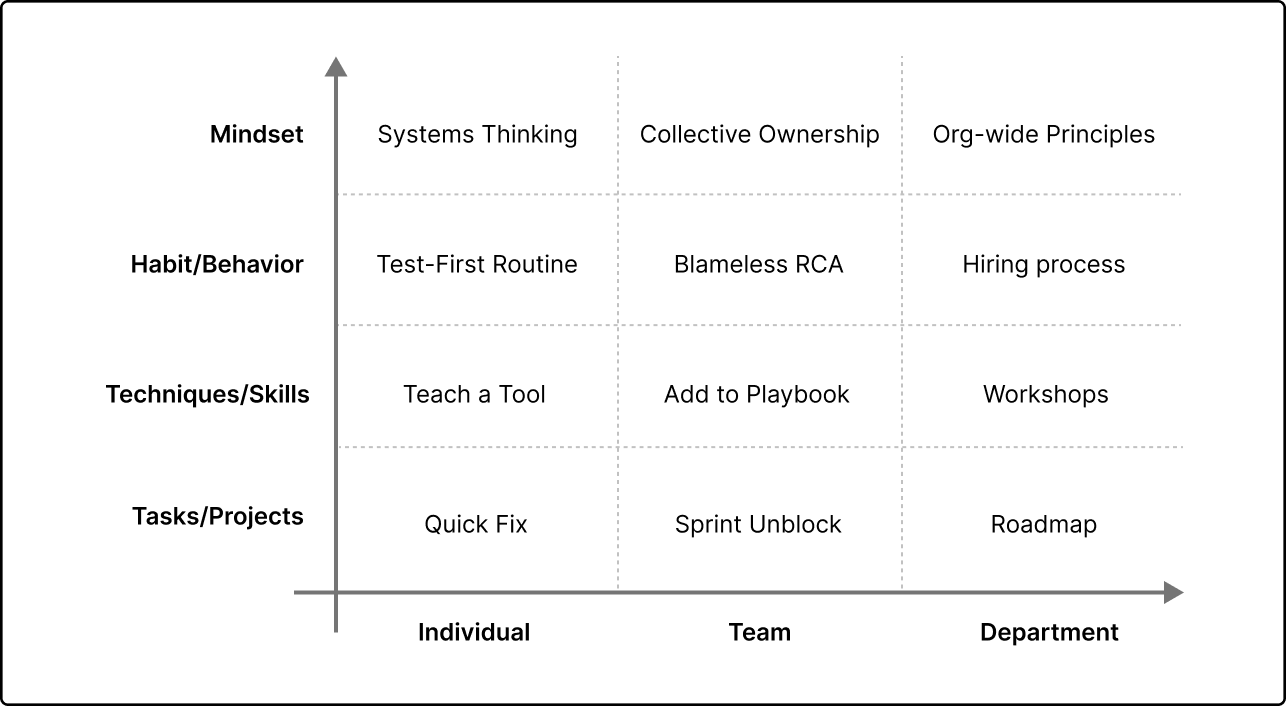The Ripple Impact Grid
Deepen and scale your mentorship impact
If you're a senior or staff engineer, or aspiring to be one, you're probably looking to maximize the impact you have. Beyond solving hard technical problems, a very effective way to do that is through mentoring. I've found that a lot of engineers either avoid it or just don't leverage their full potential, so here’s a short guide to help you get there.
The best software teams rely on their senior and staff engineers not only to steer technical direction but also to help their peers become stronger engineers. This second goal can be challenging, we are trained to reason about predictable systems at scale, but working systematically with people is a different skill set. Some might assume that growth and development are solely the responsibility of engineering managers. However, the most impactful mentors are often individual contributors who shape how their colleagues think (mindset) and how they work (behavior).
Growth impact has many facets, but this article focuses on two:
Depth: How long the effect of your guidance lasts. This ranges from providing immediate, short-term help to creating deep, long-lasting change in an engineer's skills and mindset.
Reach: The breadth of your impact. This moves from one-on-one interactions to affecting an entire team or even department.
Senior and staff ICs already review code, pair-debug, and answer domain questions. Those actions raise quality now but often evaporate by the next quarter. Impact Levels turns each mentoring touch-point into durable leverage, guiding design rigor, ownership habits, and culture well beyond the immediate task.
The Depth Axis: Creating Lasting Impact
Moving from L0 to L3 trades shallow, short-lived help for deep, long-lasting change.
While deepening impact, broadcast the lesson. Write a short guide, demo in team sync, or embed the pattern in a shared template.
Depth delivers value; extending that impact to more engineers multiplies it.
The Influence Axis: Scaling Your Impact
Progress here means moving from 1-to-1 guidance to 1-to-many amplification.
The two axes together form the grid below.
The Ripple Grid
Read the grid like a map: Move up ↑ for deeper impact; Move right → for wider impact
Shallow + Narrow: A quick fix for one person; the impact fades fast.
Shallow + Broad: A useful tip shared in a team channel; it's helpful but easily forgotten.
Deep + Narrow: Transformative coaching/mentoring for a single engineer; the impact is significant but limited in reach.
Deep + Broad: Mindset shifts that spread across teams; this is the ideal outcome and where you can have the most significant impact.
When planning for impact, ask:
How deep and long this impact will last?
How broadly can the result spread?
Even one step deeper or wider compounds the value of time already invested, turning today’s actions into next year’s culture






